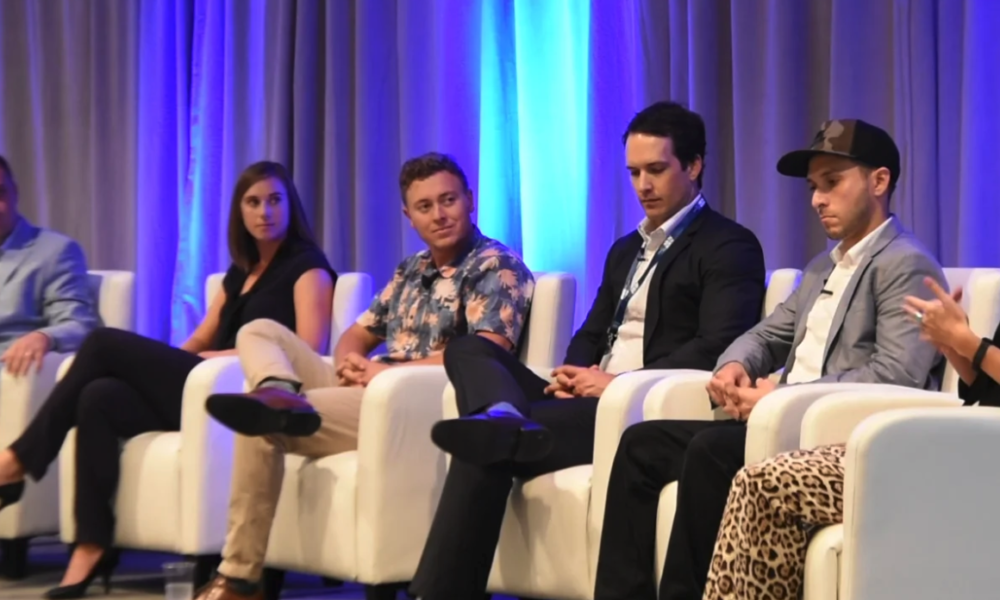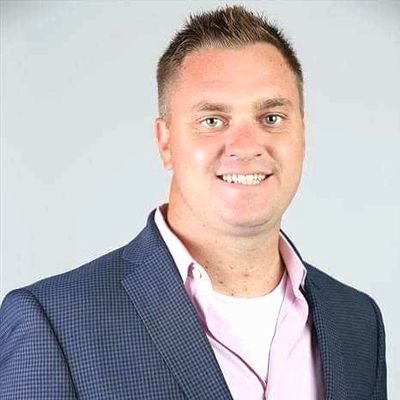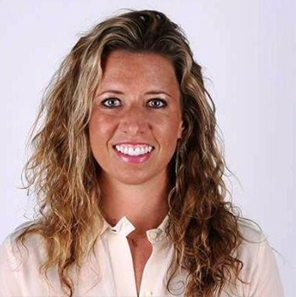Episode 68: Adriana Romero on Why Sales Enablement Needs a Seat at the Table
3.7K Views | 14 Min Read
Shawnna Sumaoang: Hi, and welcome to the Sales Enablement PRO podcast. I am Shawnna Sumaoang. Sales enablement is a constantly evolving space, and we’re here to help professionals stay up to date on the latest trends and best practices so they can be more effective in their jobs.
Today, I’m excited to have Adriana join us from Clearbanc. I would love for you to introduce yourself, your role, and your organization.
Adriana Romero: Thank you, Shawnna. I appreciate the invitation to the podcast. I am Adriana Romero and I am the go-to-market enablement manager for Clearbanc. We’re a FinTech company based out of Toronto, Canada, and we provide non-dilutive capital for eCommerce businesses in currently five countries.
SS: Well, I am very excited to have you join us today. I would love for you to explain to our audience a little bit about how the sales enablement function is structured at Clearbanc.
AR: Yeah. So, at Clearbanc, we’re a very small team. I have a team of two people that I call the go-to-market coaches. They report into myself and I report directly into our senior vice president of go-to-market who has under himself the responsibility of sales, marketing, and partnerships. The beautiful part about our structure is that I’m part of the leadership team. So, I work every day very close with the leaders and all our three functions.
And my two coaches are basically designed to work with any of the functions on the floor. So, the idea is that the coaches are able to identify gaps and work on onboarding, always boarding, and productivity across the board and go-to-market.
SS: I love that. I love that. And I’d love to understand a little bit more because go-to-market coaches is a little bit of a unique slant on this. So, in your opinion, what is the ideal structure for a sales enablement function and why have you constructed yours in this way?
AR: Yeah, so you know what Shawnna, this is my third enablement function. And to be honest, I don’t think there is a perfect function that is one-size-fits-all. I believe it really depends on the company. I believe it depends on the buyer’s journey that that company has and how enablement can kind of slide in.
When I was in a bigger organization, it was a company that had a very wide arrange of products that were segmented and six pillars. So, it made sense to have an enablement function that would kind of work with each one of those product marketing managers. And then there was a main enablement function that will work on onboarding and everything that had to do with facilitation and workshops that were more oriented to skills development on the sales area.
Then, I worked in a smaller startup. It was only me. And the main function of enablement was to do coaching on a new sales methodology and to really have a precise and direct onboarding process. The way and the reason why I have structured the role in Clearbanc this way is that we have very defined structures in our sales and our sales functions, which has translated specifically to partnerships.
So, we have playbooks, scripts, and all that will require that the enablement function understands and knows how to work with everybody and how to coach to each one of them, mainly for a scalability purpose to help the managers. And using the tools that we use in terms of revenue intelligence, in terms of other tools that we use as our CRM to identify where are the gaps on the floor. For us to work within what does our playbook say? What is the gap on the floor and how can we help the managers address it? It just makes sense for all my team to be able to address everybody and for us to have a very, I would call it, 360 function to all the roles that are nested underneath go-to-market.
SS: I actually really love that approach. I think that it’s definitely a formal approach. From your perspective, why is it important for sales enablement to take a more formal structure?
AR: It is important to have structure because the only way you can coach and determine who is a top performer and why a top performer is a top performer, is to actually have a structure to benchmark from. It is very difficult when there is not a structure for the sales floor to understand what top performers are doing. And hence, if you don’t have a structure for the sales floor and then you don’t have a structure for sales enablement, we’re really just running like chickens without our head trying to solve problems on the floor all day.
I think we can all identify with that in the enablement function. We all are trying to accomplish onboarding, always boarding, a workshop. There’s always a fire on the floor. And I had a very interesting director early in my enablement career who said, “there’s never emergencies in sales enablement.” So, if we have a structure, we can try to be more proactive than reactive. And then we know what we need to do to actually address the gaps on the floor.
SS: I think that’s fantastic. Why, from your perspective, is it important for sales enablement leaders to have a seat at the table with that sales leadership team?
AR: Well, I’m pretty sure many of the of our listeners are going to feel very attached to the fact that it is difficult to get sales managers or sales leaders to comply to training because they’re very focused on the numbers. Everybody’s focused on making sure that things occur on the floor. But if you’re part of the decisions, if you’re part of sitting down with the leaders, if you’re working closely with your VP of sales or your CRO and you report directly into them, you are part of that team. Making the decisions and training is just a natural solution that comes with everything else.
So, whatever playbook happens, whatever initiative happens, the enablement components become a natural part and arm of any sort of decisions that impact the floor. And being in several enablement roles, and now that I have the opportunity to be part of that team, it has been a more efficient way to make enablement more top of mind for people and for people to be more bought into the enablement initiatives and workshops that we do.
SS: I’d like to dive a little bit deeper on that last point. How can sales enablement build a stronger partnership with sales leadership and gain their support? And most importantly, to what you just said, their buy-in?
AR: It is about credibility. One of the things that I would say is, you have to demonstrate that what you’re doing in terms of enablement functions or workshops or any initiatives are backed up by the data that you have in the company and that you are backing up data in terms of numbers, in terms of gaps. And you’re coming to the sales managers with an intelligent solution around, “look, I am not only thinking about implementing X, Y, or Zed workshop, it’s that we’re seeing these trends on the floor and we believe that we can actually impact efficiency or performance or any metric by doing this.”
So, having a very good grasp on the data that your managers and your leaders have is very important. Understanding what are the levers and the data that you can pull in and you can help effect in order to be more proactive and to be open, to be reactive when the leaders need to, and always to stand your ground and say this is important because X. If you back up your initiatives with real consistent and solid information, there should not be an issue with that. And I think that goes back to, in many organizations, what happens when maybe enablement is reporting into the people team or reporting into HR or reporting into marketing or reporting into operations. I believe that can give a bigger gap on how enablement can actually impact the sales floor. So, those are the types of things. But building credibility with the sales leader is super important.
SS: Absolutely. And I want to talk a little bit more now about kind of some of the levers that you had mentioned because you were actually recently included in a list of 100 sales enablement best practices. And in that, you said that sales enablement teams should have a variable component in line with sales results. Now, why do you think that sales enablement should be incentivized in that way?
AR: Because it is the only way that enablement will be aligned to the objectives of the sales floor. If we’re all aligned and we know that there’s an initiative and one of the important metrics that we need to hit for Q1 is based on X number of people onboarded or people that should be following a new playbook or people that should be following some new activities, if enablement doesn’t have skin in the game, you will fall into enablement doing maybe analysis by paralysis analysis. Thinking what is going to be the better and perfect way to run a workshop? And I have seen a lot of people run into that.
But if you have skin in the game, you’re oriented and you’re aligned with the sales leaders, you have the buy-in from the floor, and you understand, and you drive a sense of urgency out of your enablement team. And to be honest, this is the first role where I have had skin in the game in terms of this, and it makes my life better. And because I have a sales background, it was something that I was hungry for. To be able to have a variable component was very important for me. And the fact that now I have it and I’m able to translate that to my team, it makes us feel more connected to the dynamics of the floor as well.
SS: I love that. I love that. Now, you alluded to a few, but in our closing question, I would love to get some examples of sales metrics that you think are most important for sales enablement to be accountable to.
AR: I’ve always read about what metrics some enablement teams use. There’s always the amount of close, the close rates, the conversion rate, depending on how you manage your funnel and your pipeline. For me, one way that enablement can be measured, is the effectiveness of onboarding. It’s a very important one. You need to have direct relatable measurements around whatever the onboarding process is. We actually give people here at Clearbanc, during our onboarding process, very specific goals they need to hit. And with a combination of those goals, we have a percentage. That means that enablement did their work with onboarding, but then what happens with the always boarding and whatever happens after the 60 to 90 days.
Then after the 90 days, I would say it’s metrics more based on – depending if it’s SDRs, account executives, and account managers – the metrics that they’re measured on. Where are we impacting? And usually it’s directly on their activity metrics. So, is there a conversion rate when they are doing any type of outbound activity? Is there any conversion rate when they’re closing deals? It really has to work on what are the lagging and leading indicators that the sales floor has depending on their product and their pipeline and their process, and to really do a very deep thought process of how was enablement really impacting any of those, and how can you really measure what enablement is doing?
Because that is always a challenge. Managers are coaching, enablement is doing workshops, who really moves the needle? There has to be some sort of percentage where enablement can give themselves credit and say, for this metric, I can hold myself accountable to at least half of that metric because this is what we were striving for in terms of our objective. It all ties in if you have objectives, if you’re aligned to the floor, if you have to hit those objectives and you’re measured, you can then come and say, this is how enablement has impacted the sales floor.
SS: I love that. I think that’s a great way to think about sales metrics that you should be, as you said, aligned to. Thank you. I really do appreciate your time, Adriana. Thank you for taking the time to talk to us today.
AR: No, thank you. Thank you so much for inviting me. I think that enablement is such an amazing function. It can be so diverse. It’s still very new, in a sense. Many people are just figuring it out, so anything that I can do to help the community of fellow members, I’m always happy to share.
SS: Well, thank you so much. To our audience, thanks for listening. For more insights, tips, and expertise from sales enablement leaders, visit salesenablement.pro. If there is something you’d like to share or a topic you’d like to learn more about, please let us know. We’d love to hear from you.

















